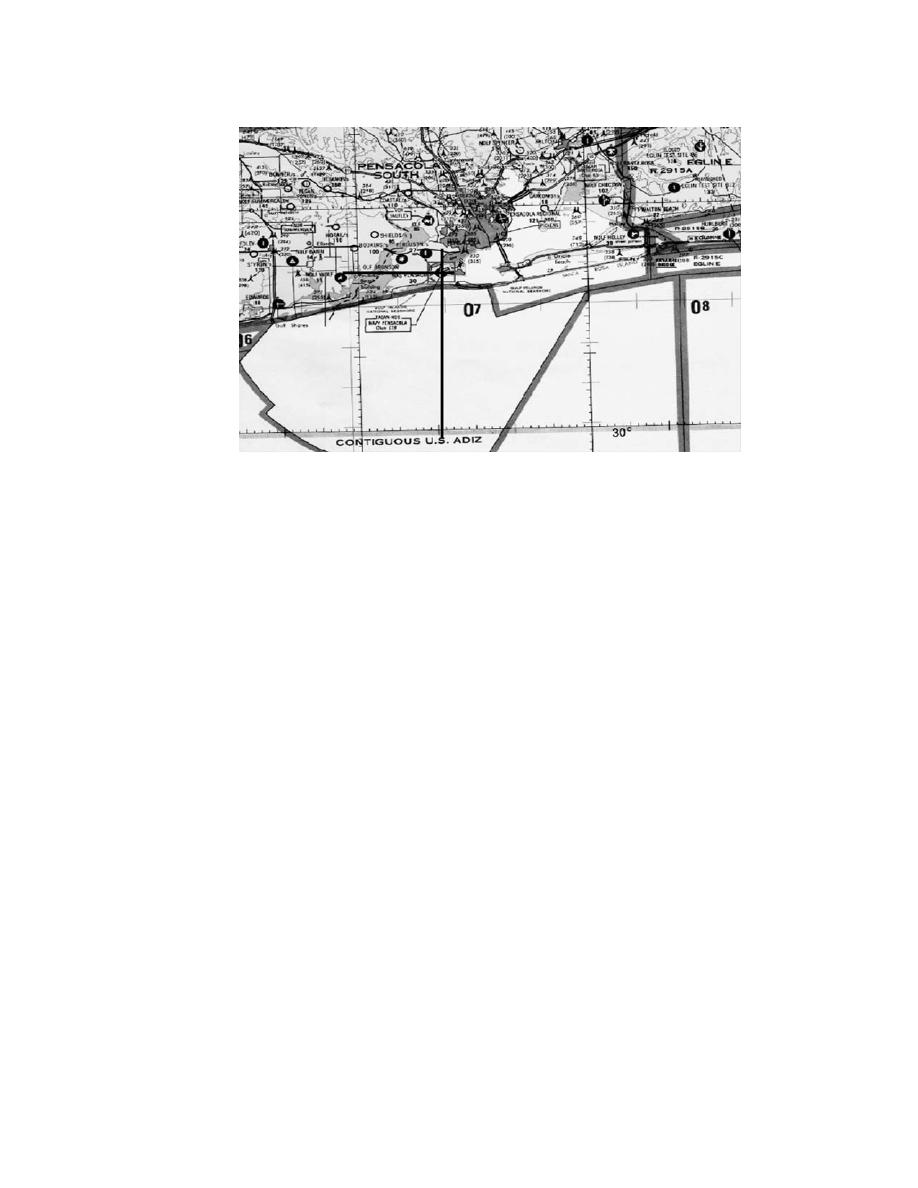 |
|||
|
|
|||
|
Page Title:
Figure 4.1-2 Latitude Longitude Coordinates |
|
||
| ||||||||||
|
|  Figure 4.1-2 Latitude Longitude Coordinates
Direction is an angular distance from a reference. Direction, stated in whole numbers, is
measured from 0 to a maximum of 359. The reference for the angle can be either True
North or Magnetic North. True North is the top of the earth whereas Magnetic North is the
point from which all of the Earth's magnetic lines of force emanate. Magnetic North is
currently located near Hudson Bay in Canada. A magnetic compass system converts the
energy from these lines of force to a cockpit indicator reading. Typical military aircraft have
two compass systems: a primary and a secondary/back-up.
The aircrew's primary instrument for determining direction in the cockpit is the Remote
Gyro Vertical Compass Card. This compass uses a remotely located detection element
(called a flux detector) to sense the magnetic field at a point where interference is at a
minimum (such as a wing tip). This sensor converts magnetic energy to an electrical
voltage, which then drives electrical motors that turn the compass card to reflect changes
in aircraft heading (see Figure 4.1-3).
The aircrew's primary instrument for determining direction in the cockpit is the Remote
Gyro Vertical Compass Card. This compass uses a remotely located detection element
(called a flux detector) to sense the magnetic field at a point where interference is at a
minimum (such as a wing tip). This sensor converts magnetic energy to an electrical
voltage, which then drives electrical motors that turn the compass card to reflect changes
in aircraft heading (see Figure 4.1-3).
The aircrew's primary instrument for determining direction in the cockpit is the Remote
Gyro Vertical Compass Card. This compass uses a remotely located detection element
(called a flux detector) to sense the magnetic field at a point where interference is at a
4.6-11
|
|
Privacy Statement - Press Release - Copyright Information. - Contact Us |